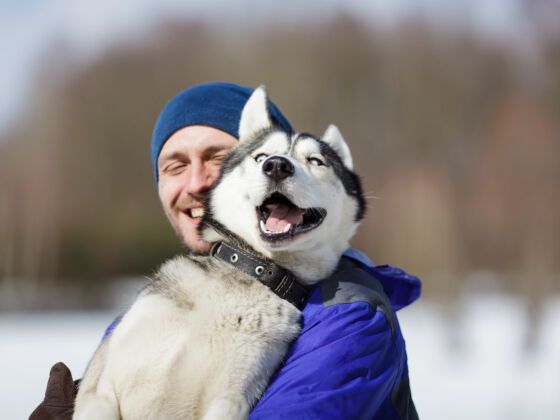Be sure to RIGHT CLICK on the links and open in new tab to automatically play audio samples of animal noises spoken by children around the world, courtesy of The Quack-Project.


IT’S THE THIRD DAY of my intensive German language course and the ice has yet to break. Despite our collective struggles with noun genders and irregular verbs, the atmosphere isn’t yet collegial; hailing from a dozen different countries, we sense, perhaps, more cultural barriers than bridges. We are timid and reticent, afraid to fumble.
But something has to give. At the next break, as some lean back in their chairs and others get up for a smoke, I clear my throat to get the room’s attention.
“I have an important question for everyone,” I say. A dozen very serious faces stare back. “What,” I continue, “does a dog say in your language?”
Immediately the atmosphere brightens, as one by one my classmates describe their versions of a dog’s “woof.” Then we move on to other pets, livestock, wild animals. Things get a little silly. People who have been too shy to speak are suddenly interrupting others to get in their version. When the break is over, the Kosovian girl who’s said nary a word all week leans over my desk. “Don’t you want to know my noises too?”
Indeed I do. It wasn’t until recently that I realized how varied animal sounds are across languages—some so different it’s hard to imagine they’re referring to the same noise—and I’ve become fascinated by those deviations.
Cows, it turns out, are fairly predictable: In English, cows “moo”; in Dutch, they “boe”; and in Icelandic, they “mö” (as my Icelandic informant says, even their cows speak in umlauts!). Mongolian cows combine both “b” and “m” sounds in a robust “umboo,” and Bengali cows similarly “hambaa.”
Widen the spectrum to other livestock and things get a little more interesting. In English, German, and Afrikaans, pigs say “oink oink”; but in Dutch it’s “knor knor,” and Norwegians say “nøf nøf.” Cantonese swine make a guttural “hēng” while Polish piglets offer an adorable “chrum chrum.” Indonesian pigs say “ngoik ngoik,” Kosovans “hunk hunk,” and Russians “hrgu hrgu.”
Think dogs “woof” all over the world? Not in Tunisia, where they “hab hab hab”; Afghanistan, where they “ghav ghav” and Algeria where they “haw haw”; or Kosovo, where they “ham ham.”
With “cock-a-doodle-doo,” English has—by far—the most outlandish (dare I say ridiculous?) version of a rooster’s song. But Norway’s nearly unpronounceable “kykkilyky” comes close. Incredibly, languages as far apart as Tagalog (“cocorokok”), Portuguese (“cocoro coco”), Persian (“kukukuu”—from my Afghani informant), Albanian (“kikirikiku”), and Hebrew (“kukuriku”) use nearly the same pattern of sounds.
From a linguistic point of view, such similarities make sense. Onomatopoeia—basically, when a word sounds like the thing it represents—is present in every language, and though examples like whoosh, crack, and whip are more commonly referenced, animal noises are often just as imitative. “Hoo hoo” (as an owl says in many languages) really does sound like an owl. Bees “bzzz” or “zzz” in almost every language I researched (Japan’s “bunbun” being a notable exception). There’s just no more realistic way to say it.
So, what’s it all mean?
Though the origins of human language are murky, many linguists believe onomatopoeic sounds—along with signs and grunts—kickstarted spoken language. Over the millennia, as communicaton evolved and languages diversified, those sounds moved away from direct representation and became more symbolic and arbitrary. Hence, hens that may have once “gut gut gut”ed in Afghanistan began to “kakaka” in Sweden, then “cluck” in America. And inevitably along the way things got a little confused: while ducks “quack” in English and “vak” in Turkish, for example, in Germany it’s geese that “quäk quäk,” and in Iceland it’s frogs that go “kvak” in the night (to bring it full circle, their ducks “bra bra”—who knew?). At least Mongolians keep things simple, with both sheep and goats wailing “maiii maiii” across the steppes.
Another linguistic theory associates high tones and front vowels, such as i, with “words symbolizing small size and brightness, e.g. thin, light, petit.” Low tones and back vowels, such as u, are often found in “words representing large size, darkness, and coarseness, e.g. gloom, hunk, and muck.” Is this why small animals often use the ee sound—birds “twiet twiet” (Dutch) and “ćwir-ćwir” (Polish), and mice “squeak” (English) and “piep” (Dutch)—while larger animals, like the cow, groan in us and oos? Alas, the theory falls apart with an animal such as a horse, which “eeyaa”s in Mongolian and “i-hahaha”s in Polish.
But who cares about theories when there’s noises to make! For additional languages and help with pronounciation, these websites are great:
The Quack-Project
Animal Sounds Around the World
Derek Abbott’s Animal Noises
Finally, I turn it over to you: What do animals say in YOUR language? Research note: While there are a number of animal noises websites out there already, I wanted to stick with sounds I collected personally from native speakers of each language; thus there are likely slight variations with spellings and pronunciations, since phonetics are difficult to transcribe and translate.